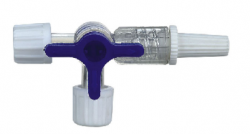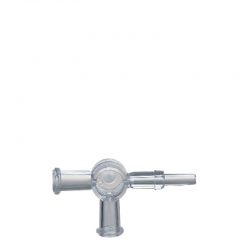Note On The Operation Of Three Way Stopcock
The Three Way Stopcock is very suitable for the effective discharge of air and fluid in the body cavity.
We will use the same setup for several different emergency procedures, including thoracentesis (for pneumothorax, hemothorax, and other pleural effusions), and therapeutic abdominal puncture (for ascites / peritoneal effusion / peritoneal effusion) And autologous blood transfusion.
You will need:
-Three-way stopcock
-Expansion kit (we usually use 30 cm conventional expansion kit)
-Syringe (60cc, 35cc, 20cc or 12cc, depending on the patient’s size)
-Nitrile or latex gloves (people operating three-way stopcocks should always wear gloves).
Connect different components.
Connect the three-way stopcock to the grill and extension kit. The size of the syringe depends on the size of the patient. For large dogs, use a 60cc syringe is appropriate, and for small dogs and cats, you can choose to use a 20cc or 12cc syringe.
Make sure the connection is secure and that there are no leaks.
It is important to ensure that all connections are very secure and that there are no leaks in the three-way stopcock. If there is a leak, it may give the wrong impression that you are actually drawing air from the room into the syringe through a loose connection, thereby pulling the air out of the patient’s body cavity.
To test for leaks, clamp the expansion kit, turn the valve to the right, and then suck the syringe back. If there is no leakage, no air should be sucked back into the syringe and the negative pressure should be maintained.
To operate the three-way stopcock:
To operate the three-way stopcock when connected to a patient, remember:
-The port connected to the expansion kit will point to the patient, and
-The port on the right side of the three-way stopcock will be used to draw liquid from the syringe and push it into the collection bowl or sample tube.
Remember: the direction the valve points to always means “closed”.
If the valve points to the patient, it will “close” to the patient, and fluid (or air-if pneumothorax is being processed) will be able to flow between the syringe and the side port.
If the valve is pointing to the right, the valve will “close” to the side port and fluid (or air) will be able to spread between the patient and the syringe.
Therefore, when sucking back from the patient, be sure to release the expansion kit and rotate the valve to the right. This allows you to draw fluid or air from the patient and into the syringe.
To empty the syringe when the syringe is full, rotate the valve toward the patient (or “close” the patient), and then push the fluid (or air) out of the syringe. When doing this, you should be able to detect the liquid (or air) flowing out of the side port of the three-way stopcock and into the collection bowl. If you accidentally emptied the syringe while the valve is still pointing to the right, you only need to push the fluid (or air) back into the patient, which will be counterproductive.
If you are a person operating a three-way stopcock, it is important to communicate with the person who pushes the needle or catheter into the patient. Clearly state the pressure or negative pressure of fluid or air flowing into the syringe. When you can easily inhale, say “good things that can flow”. When encountering flow resistance, say “negative”, “negative pressure” or “get nothing”.
Our Three Way Stopcock selects the life-long injection mould of medical equipment, which can be used for multi-channel and multi-infusion treatment, and the rotation is flexible and unlimited. Choose our products so that you have no worries during use. Is a professional three-way plug valve manufacturer and three-way plug valve supplier in China. Welcome to order: https://www.medicalmould.net/product/transfusion-bloodset-mould/stopcocks-mould/








